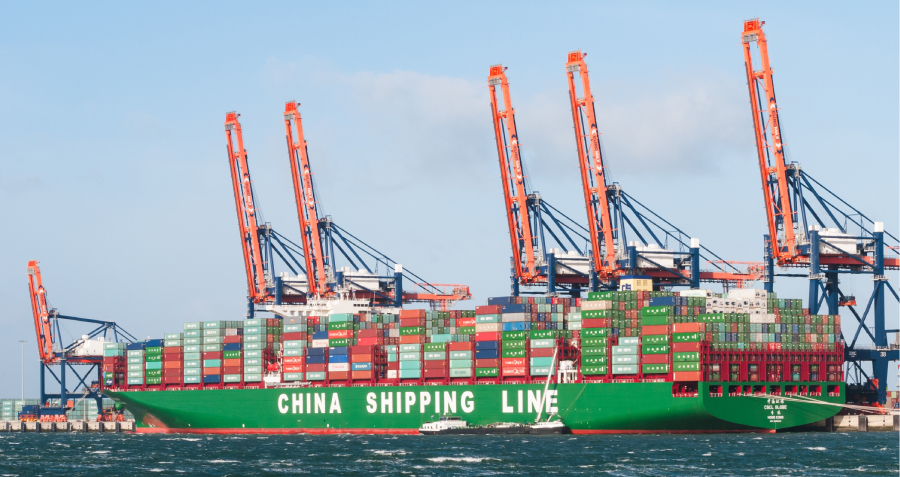India’s diamond and jewelry industry has achieved a remarkable milestone, overtaking China to become the world’s second-largest market for natural diamond jewelry. This ascent comes at a particularly challenging time, as the industry grapples with U.S. tariffs that escalated to 50% in August 2025, threatening the sector’s traditionally export-dependent business model. Yet the Indian jewelry industry’s response to these challenges offers valuable lessons in strategic adaptation, market diversification, and the power of domestic demand.
The Trump administration’s imposition of a 50% tariff on Indian goods has created an existential challenge for India’s jewelry exporters, who ship some $10 billion worth of products annually to the United States—their single largest export market. However, the industry’s response has been swift.
Most large companies have pioneered a hybrid manufacturing model. Some have set up casting factories themselves while others have partnered with jewelry factories in the U.S. This approach allows jewelry to be designated as a U.S. product of origin while maintaining cost competitiveness. The rough casting happens in America, employing U.S. labor, before being shipped to India for labor-intensive processing and diamond setting, serving customers who buy fine jewelry from retailers like Walmart, JC Penney, and Macy’s.
Industry sources say that companies are also establishing operations in the UAE, which enjoys a more favorable 10% tariff rate compared to India’s 50%. Titan Company, India’s largest jeweler with consolidated revenues of approximately $7 billion, has announced plans to explore the Gulf region as a manufacturing base for exports to the U.S.
While navigating international trade challenges, India’s domestic diamond jewelry market has exploded with growth. According to De Beers CEO Al Cook, India’s diamond jewelry demand is expected to double from the current $10 billion to $20 billion by 2030, driven by economic growth and a rising middle class. This domestic strength has proven crucial as exports have plummeted to their lowest level in nearly two decades.
“The news that India has overtaken China as the world’s second largest consumer of diamonds and diamond jewelry specifically refers to the domestic market,” explains Anmol Bhansali, Managing Director of Goldiam International Ltd. “You have this very large event in Indian life, the wedding. The amount of jewelry consumption that happens then is staggering.” He points to evolving consumer behavior that extends far beyond traditional wedding purchases: “Premium and luxury income segments do multiple weekends for a wedding. Upper middle income segments now do three events for one wedding. The amount of jewelry consumption just skyrockets.”
The demographic driving this growth is surprisingly young — 50% of buyers are under 35, with millennials and Gen Z accounting for approximately 75% of purchases. This younger cohort has embraced diamond jewelry not just for special occasions but as everyday wear, a shift that companies like CaratLane have successfully capitalized on with 24% year-on-year growth despite market challenges.
Workforce Crisis and Transformation
Behind the industry’s success lies a human story of adaptation and resilience. The downturn in exports has led to the closure of approximately 5,000 small and medium cutting and polishing units since 2020, leaving some 200,000 workers unemployed. Surat, the global diamond polishing hub in the western state of Gujarat — which processes 90% of the world’s rough diamonds — has been particularly hard hit.
Yet the industry’s response demonstrates remarkable solidarity and innovation. Rather than implementing mass layoffs, many companies have chosen to reduce hours while keeping workers employed. Industry insiders report that companies have extended traditional holidays — with Diwali breaks stretching from 10 to 30 days — to reduce the financial burden on owners while ensuring workers retain their jobs and income.
More significantly, Surat’s diamond industry is undergoing a fundamental transformation. Approximately 10% of the city’s 5,000 diamond cutting and polishing units have ventured into jewelry manufacturing, recognizing the shift in global demand patterns.
The Gems and Jewellery Export Promotion Council (GJEPC) has launched jewelry-making courses to retrain the workforce, while the Gujarat government’s SANKALP project encourages public-private partnerships for skill development, planning to train 600 candidates annually.
The Southern Gujarat Chamber of Commerce and Industry formed a Diamond Task Force in 2025, focusing on developing branding strategies, providing guidance for smart manufacturing, and organizing short-term courses in diamond cutting-polishing, designing, and gemology. This coordinated response shows how an entire ecosystem can pivot when faced with existential challenges.
The Lab-Grown Diamond Revolution
One of the most fascinating dynamics in India’s jewelry market is how it is navigating the tension between natural and lab-grown diamonds. While maintaining natural diamonds as the aspirational choice for domestic consumers, Indian companies are strategically positioning lab-grown diamonds as a complementary, not competing, product category.
“We believe that there will be a sizable space for a lab grown diamond player over the next three to five years, and we’re building distribution in advance of that,” Bhansali says. His company’s Origin brand targets a specific niche: “Our average selling price is 60,000 to 65,000 rupees, whereas everyday fine jewelry players are at 35,000 to 45,000. We find that people are okay to slightly size up the ASP in order to afford a solitaire, a one carat diamond, one and a half carat diamond.”
This strategic positioning is crucial. Rather than competing with traditional wedding jewelers or plain gold retailers, lab-grown diamonds are positioned to compete with “everyday fine omni-channel jewelry retailers like CaratLane and BlueStone.” India’s lab-grown diamond revenue, currently at $350 million in 2024, is expected to grow at 15% CAGR to reach $1.2 billion by 2033.
The generational divide is stark. Industry observers note that Gen Z and younger millennials approach jewelry buying like purchasing electronics—without concern for value retention or family heritage. Yet for now, companies like Tanishq remain committed to natural diamonds for the Indian market. “The natural diamond story in India is still well and strong, certainly not dying at all,” Bhansali says. This dual-track approach—embracing lab-grown for exports and younger demographics while maintaining natural diamonds for traditional luxury—shows sophisticated market segmentation.
The China Factor
India’s overtaking of China reflects fundamental differences in consumer behavior, market structure, and strategic choices that offer important lessons for global markets. While India has maintained its focus on natural diamonds for domestic consumption, China has embraced lab-grown diamonds far more rapidly. China now dominates global production of HPHT (High Pressure High Temperature) lab-grown diamonds, with Chinese consumers adopting synthetic diamonds at a pace that has surprised even industry veterans. “China is selling HPHT to their own people. China is losing a lot of natural market share,” notes one industry insider. “The consumers have adapted a lot quicker than Indian consumers.”
The cultural differences run deep. “Consumer trends in China have always leaned towards more plain gold and plain metal than a preference for diamond,” Bhansali observes. “There is no such large life event where jewelry consumption just skyrockets during somebody’s wedding day as such.” This contrasts sharply with India, where weddings drive massive jewelry consumption across multiple events and ceremonies.
The economic context also differs significantly. As China’s economy has slowed and property markets have wobbled, Chinese consumers have shifted toward gold as a stable investment amid uncertainty. Meanwhile, India’s growing middle class continues to view diamonds as both luxury items and symbols of achievement, maintaining the emotional and aspirational value that has eroded in China.
Perhaps most tellingly, while Chinese companies have focused on becoming the workshop for global lab-grown diamond production, Indian companies have maintained a more balanced approach. They’ve kept their natural diamond processing dominance while selectively entering lab-grown markets, protecting the premium positioning of natural diamonds in their home market while adapting to international demand for synthetic alternatives.
This strategic difference reflects a broader lesson: markets that completely abandon traditional luxury categories in favor of synthetic alternatives risk losing the premium positioning and emotional resonance that drives long-term value creation in the jewelry sector.
Strategic Lessons for Global Markets
India’s experience with its jewelry industry offers several lessons for other countries.
1. Diversification Beyond Traditional Markets
“Australia and Canada very closely mimic what we do for US jewelry—very similar tastes, very similar sort of merchandising,” Bhansali notes. But he’s particularly excited about emerging opportunities: “The Middle East is very similar to Indian domestic jewelry, where it’s plain gold, heavy, big sets, motifs that are Indian.”
Indian companies aren’t stopping there. Bhansali reveals ambitious plans to enter the luxury segment: “Even five years ago, if you entered a store like a Louis Vuitton or a Dior or Chanel, they really didn’t have fine jewelry available. But today, if you enter any of these brands, they’ll have a section dedicated to fine jewelry.”
2. Build Domestic Strength as a Buffer
The contrast between export and domestic markets has never been clearer. “The largest jewelry markets are growing internationally at zero to 2% if they’re lucky,” says Bhansali. “In India, however, the industry is growing very dramatically in double digits — maybe diamond studded will grow 15%, maybe lab grown diamond studded itself will grow 20%.”
This domestic focus has required significant investment. Goldiam raised funding in August 2024, with Bhansali revealing that “90% of those funds are being earmarked to expand our retail operation in India,” while only 10% goes toward their global B2B business.
3. Adapt Manufacturing Models to Political Realities
The hybrid manufacturing model allows Indian jewelry companies to thrive despite the challenging geopolitical environment. This flexibility isn’t available to all industries — garment exporters and shrimp processors, for instance, cannot employ similar strategies — making the jewelry industry’s adaptation particularly instructive for sectors that can segment their production processes.
4. Invest in Consumer Education and Partnerships
The partnership between De Beers and Tanishq exemplifies how international collaborations can accelerate domestic market development. De Beers is opening 15 new Forevermark stores in India in 2025, aiming for 100 stores by 2030. These partnerships combine global expertise with local market knowledge, creating powerful synergies for market expansion.
Despite the current challenges, industry leaders remain optimistic. The sector’s transformation from traditional export-oriented manufacturing to a balanced approach emphasizing both global expansion and domestic cultivation positions it for long-term resilience.
“Can we position ourselves in a part of the business that naturally has tailwinds, where even if we don’t do a great job, just by being positioned correctly, we may have tailwinds to help achieve some level of skill?” Bhansali asks rhetorically, answering his own question through his company’s strategic pivot toward India’s booming domestic market.
The Indian jewelry industry’s experience offers valuable lessons for other markets facing similar challenges. Success requires not just weathering trade tensions but fundamentally reimagining business models, investing in domestic demand, maintaining workforce solidarity through difficult transitions, and strategically positioning both natural and synthetic products to serve diverse consumer segments.
As global trade becomes increasingly complex and politically charged, India’s jewelry industry demonstrates that resilience comes not from choosing between domestic and international markets, but from strategically balancing both while remaining nimble enough to adapt to rapidly changing circumstances. The industry’s ability to transform crisis into opportunity—whether through innovative manufacturing models, workforce retraining, or strategic market positioning—provides a blueprint for traditional industries navigating an uncertain global future.



















